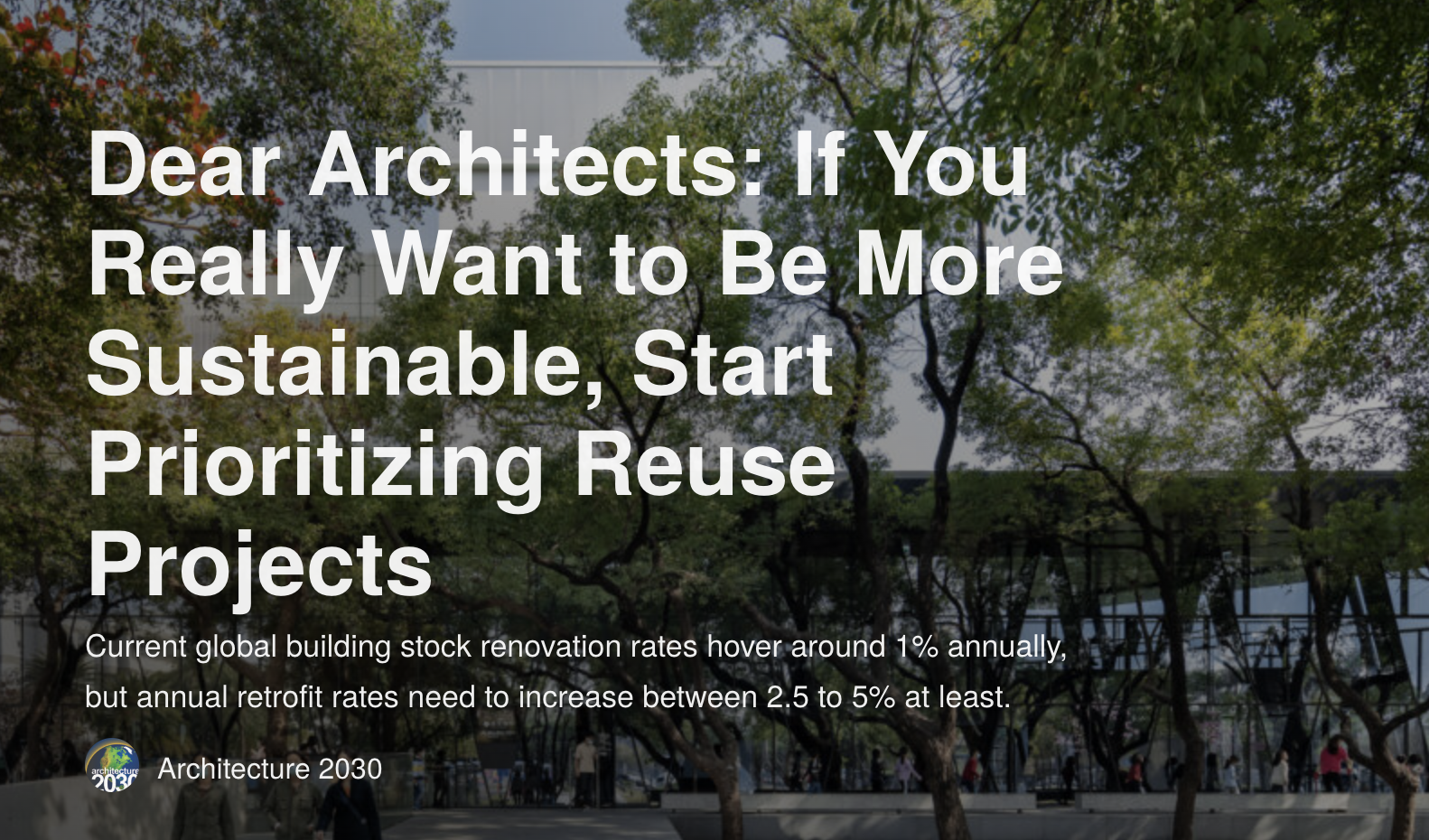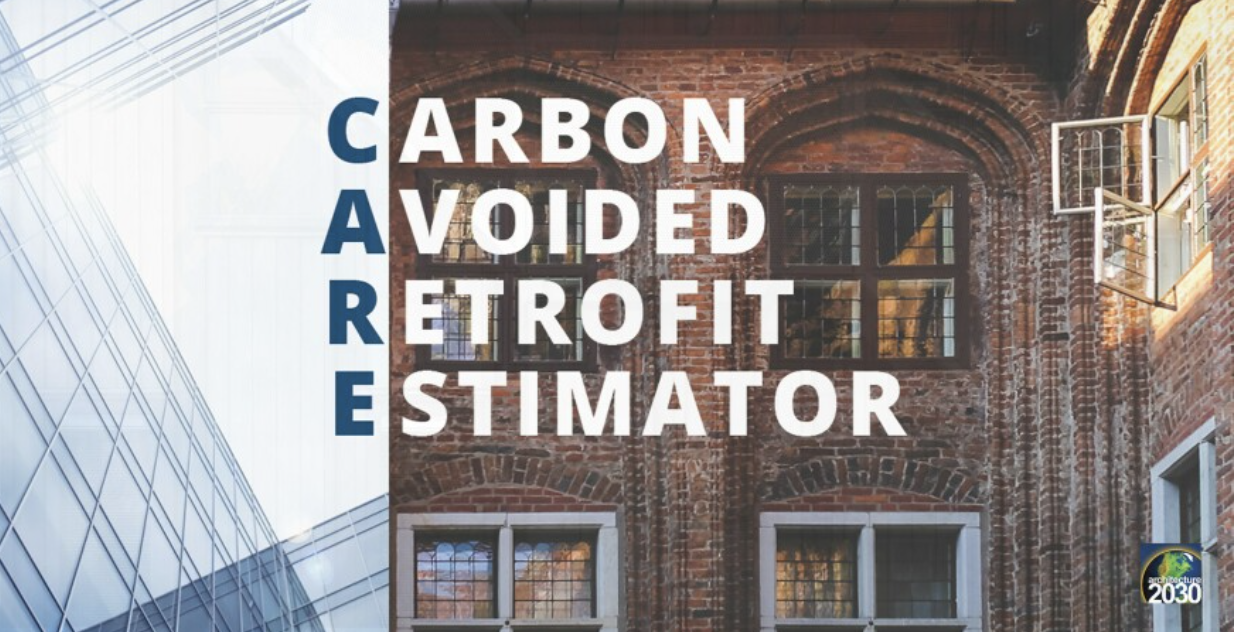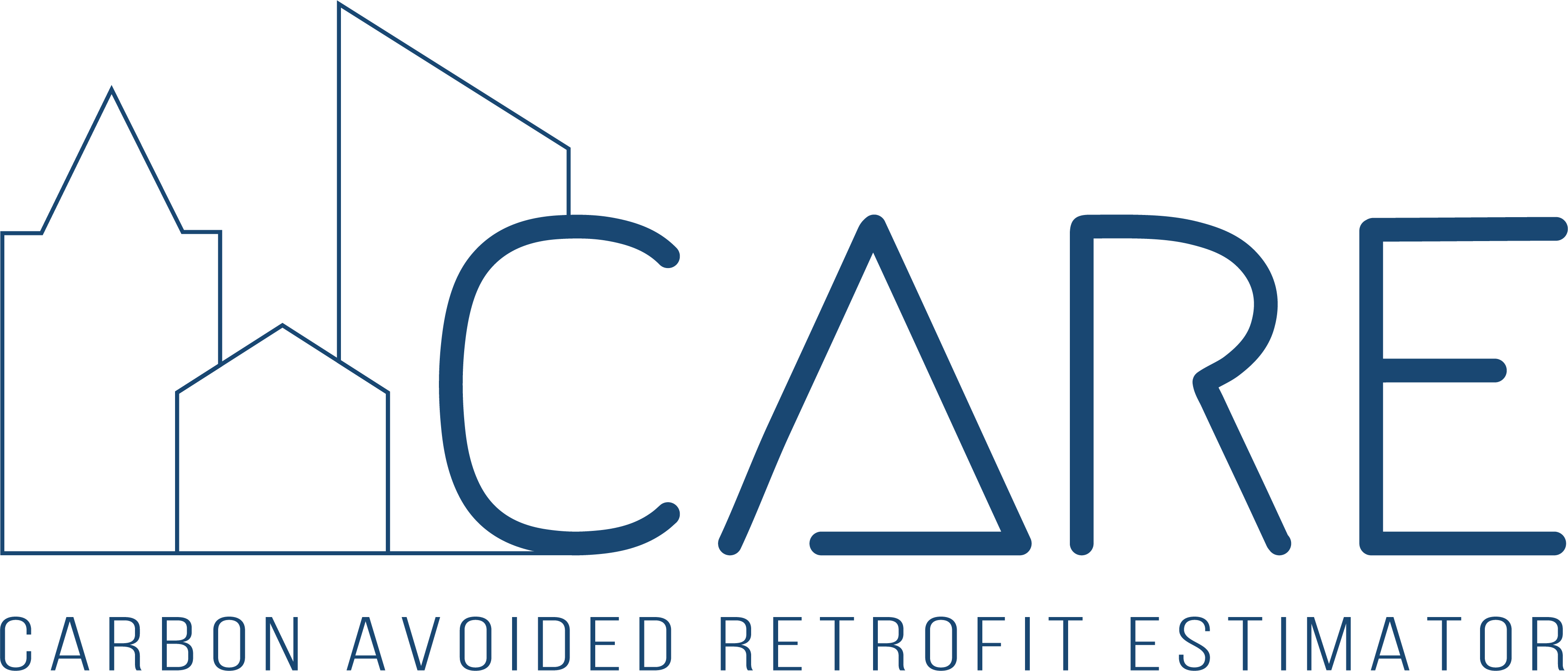
The CARE Tool
source: Green Building Advisor | 10/2/23
How Architecture 2030’s new software enables builders to reduce embodied carbon and find reuse solutions.

The CARE Tool Answers the Question: Renovate or Replace?
source: Metropolis | 8/29/23
One of Metropolis’s “Salvage Superstars,” this tool compares the carbon impact of updating existing buildings versus building new.

Dear Architects: If You Really Want to Be More Sustainable, Start Prioritizing Reuse Projects
source: Architizer | 6/15/23
In December, Architecture 2030 launched a calculator to estimate the operational and embodied carbon emissions of a project in two scenarios: reusing it and upgrading it or replacing it with new construction. Dubbed the Carbon Avoided Retrofit Estimator (CARE) Tool, Architecture 2030 hopes to underscore the carbon savings that can be found by adapting existing buildings for future use in contrast to the widespread assumption that new construction is always appropriate.

Design Dialogue: New calculator compares carbon savings for existing and new building
source: Inform | 4/26/23
In December, Architecture 2030 launched a calculator to estimate the operational and embodied carbon emissions of a project in two scenarios: reusing it and upgrading it or replacing it with new construction. Dubbed the Carbon Avoided Retrofit Estimator (CARE) Tool, Architecture 2030 hopes to underscore the carbon savings that can be found by adapting existing buildings for future use in contrast to the widespread assumption that new construction is always appropriate.

CARE, a New Digital Tool, Helps Designers Quantify the Value of Reuse Versus New Construction
source: ArchDaily | 2/28/23
Refurbishment and adaptive reuse have been at the forefront of architectural discourse in recent years. This demonstrates that the profession is becoming increasingly aware of its impact on the environment and the opportunities presented by reusing what has already been built. Architecture 2030 has recently launched CARE, or Carbon Avoided Retrofit Estimator, a new digital tool that enables designers, owners, and communities to quantify the carbon benefits of adaptive reuse.

Architecture 2030’s new CARE Tool helps measure the carbon reduction of retrofit projects
source: Archinect | 2/15/23
A new metric measuring the amount of carbon reduced in reuse projects is changing the way practitioners of the built environment can quantify the success of retrofit projects of all types and sizes.

Architecture 2030 Launches CARE Tool
source: ARCHITECT | 2/15/23
The Santa, Fe, N.M., organization hopes that the new tool will “dramatically streamline the process, enabling owners, communities, and design teams to quickly quantify the carbon benefits—and understand the value of reuse.”

We Can’t Build Our Way To Net Zero
source: Next City | 1/10/23
Op-ed: Reusing and retrofitting existing buildings is vital to achieving significant emissions reduction targets in the few years we have.

Anton Grassl/ESTO
CarbonPositive: Carbon Intelligence for Reuse Decisions
source: Architect Magazine | 12/16/22
Thanks to a new tool, architects and building professionals can accurately quantify the emissions savings of “reuse versus replacement.”

Raze or Retrofit? CARE Tool Has the Answer
source: Building Green | 12/5/22
Should it stay or should it go? From a carbon perspective, conventional wisdom says most buildings should stay. The CARE Tool backs that up with data.

We Can’t Build Our Way To Net Zero: Building Stewardship At Agnes Scott
source: Drawdown Georgia | 6/22/22
As Carl Elefante, former president of the American Institute of Architects, once said: “The greenest building is the one that already exists.” A powerful example of this comes from Agnes Scott College in Decatur, Ga.: this school is making progress toward carbon neutrality by preserving and retrofitting its magnificent existing buildings.

